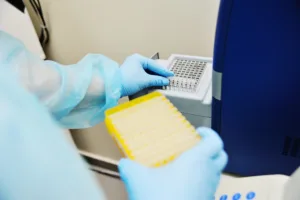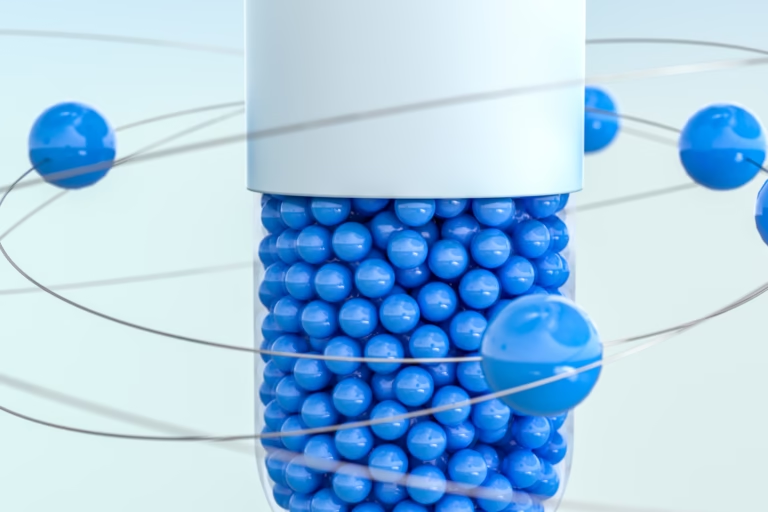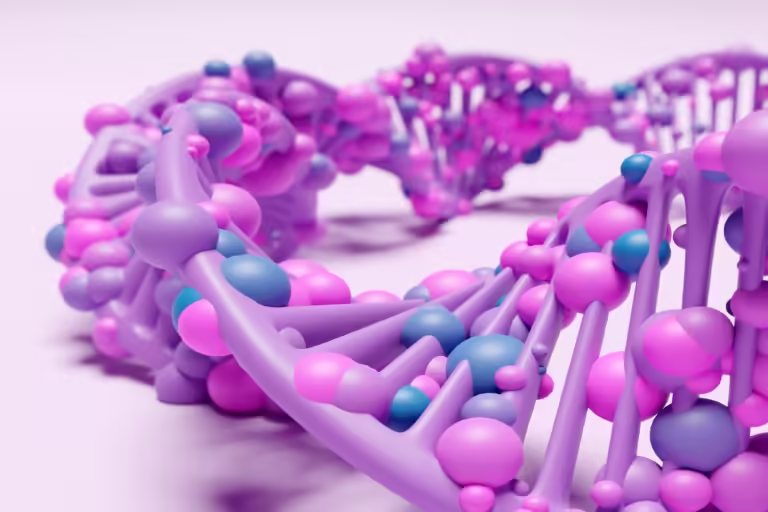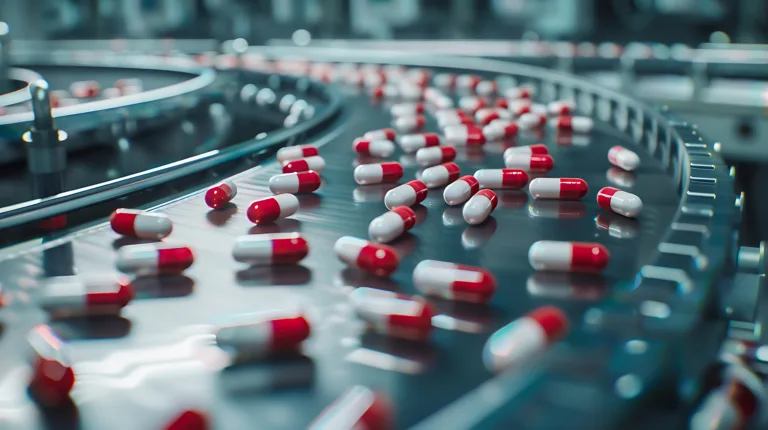The comparison between PCR and culture in lab testing is critical. Understanding their disparities is paramount for the accuracy and efficacy of diagnostic and treatment approaches. We embark on a journey to delineate the superior method, delving into the nuanced distinctions of PCR or culture.

Key Takeaways of PCR or Culture:
- PCR and culture are both important lab tests used in diagnostics and treatment.
- PCR is a molecular technique that amplifies DNA sequences, while culture involves growing microorganisms.
- PCR is faster, more sensitive, and more accurate compared to culture.
- Culture techniques may not detect non-viable pathogens or low levels of microorganisms.
- The integration of PCR and culture can provide a comprehensive understanding of infections and guide treatment decisions.
Understanding PCR Testing
PCR testing, or polymerase chain reaction testing, is a key method employed in laboratories for the detection and investigation of genetic material. It is characterized by multiple essential stages that underpin the precise and sensitive identification of specific DNA sequences. This technique plays a critical role in various scientific and medical applications.
The initial phase involves the isolation of genetic material from the specimen under scrutiny. Such material may comprise either DNA or RNA, contingent upon the test’s particular objective. Following extraction, distinct primers are introduced. These short DNA sequences are meticulously engineered to adhere solely to the target DNA sequences.
Subsequent to primer addition, the PCR apparatus—commonly a thermocycler—commences operation. The thermocycler’s role is to exponentially increase the DNA by orchestrating alternating heating and cooling stages.
Each heating-cooling cycle prompts a duplication of the DNA, culminating in the significant proliferation of the sought-after genetic sequences.
This mechanism of amplification is the cornerstone of PCR’s remarkable sensitivity and accuracy. It allows for the discernment of minute genetic material quantities, facilitating the identification of pathogens, genetic anomalies, and pharmaceutical metabolism-affecting variations.
PCR testing has metamorphosed the diagnostic landscape, gaining substantial traction, particularly in the diagnostic arena of infectious diseases, exemplified by its pivotal role in the ongoing COVID-19 response. Its swift and dependable outcomes empower medical professionals to promptly devise and implement treatment strategies.
Technological evolutions have propelled PCR towards the creation of rapid, high-throughput assays, further streamlining the diagnostic process. These enhancements bolster the test’s analytical capacity, facilitating the concurrent analysis of numerous samples within compressed time frames.
In conclusion, PCR testing stands as an indispensable pillar of laboratory diagnostics. Its blend of precision, sensitivity, and efficiency renders it crucial in the assessment and management of diverse medical conditions, thereby steering the course of tailored treatment plans.
Exploring Culture Techniques
Culture techniques are fundamental in the investigative process of bacterial and viral infections, alongside the assessment of antibiotic resistance paradigms. Initial steps encompass the acquisition of samples, for instance, swabs or bodily fluids, which are subsequently secured in a conducive medium for growth, such as agar plates or broths. Through incubation, an environment harmonious to the development of microorganisms is engineered.
This elaborate process extends over a timeframe of 24 to 48 hours, sometimes longer, contingent upon the specimen’s microbial composition. Eventually, discernible colonies manifest, signifying the presence of microorganisms, which are then subjected to meticulous analysis and categorization to unveil their attributes and characteristics.
“Culture techniques are pivotal for an in-depth examination and the discernment of bacterial and viral pathogens.”
Conversely, viral culture delves into the intricacies of viral infections. By harvesting specimens from infected sites or excreta, such as blood or exhaled secretions, and propagating them in a fertile terrain, scientists garner the opportunity to witness viral proliferation and scrutinize its properties. This methodology is indispensable in the formulation of efficacious therapeutic and prophylactic strategies.
Equally significant, cell culture procedures entail the nurturing of distinct cell types within a controlled setting. Delveing into the cellular dynamics, such as their reaction to various stimuli or drugs’ impacts, has implications across diverse domains, encompassing medical exploration and pharmaceutical innovation.
“Viral culture and cell culture methodologies yield critical insights into the proliferation, functionality, and attributes of microorganisms and cells.”
Despite their efficacy, the utility of culture techniques is circumscribed by certain constraints. Not infallible, they can overlook scanty amounts of microorganisms or pathogens that are no longer viable. Moreover, the duration mandated for cultivation and functional analysis may impede swift decision-making under certain scenarios.
Collectively, culture methodologies constitute an invaluable surrogate for unraveling infectious ailments and the progression of antibiotic defiance, proffering distinctive information about microorganism and cellular dynamics. Nonetheless, the advent and proliferation of PCR methodologies present an enticing alternative, given their swiftness, acute sensitivity, and diagnostic precision.
Advantages and Limitations of Culture Techniques
| Advantages | Limitations |
|---|---|
| – Provides detailed analysis and identification of microorganisms | – May not detect low levels of microorganisms or non-viable pathogens |
| – Valuable for studying bacterial and viral infections | – Time-consuming compared to other diagnostic methods |
| – Helps determine antibiotic resistance patterns | – Subjective interpretation of visible growths |
Despite the unparalleled strengths of culture techniques, PCR protocols have reshaped diagnostics by fostering expeditious and precise analyses. The forthcoming section will dissect PCR testing, elucidating its merits and pervasive utility within the diagnostic arena.
Advantages of PCR over Culture
PCR, known as the polymerase chain reaction, presents a paradigm shift over traditional microbial culture techniques in the laboratory setting. This discourse delves into the nuanced accuracy, efficiency, and minute sensitivity that hallmark PCR, rendering it a paramount option in the sphere of diagnostics and treatment modalities. The unparalleled superiority of PCR lies in its ability to discern the faintest traces of genetic materials.
Accuracy
The technique of PCR is lauded for its exquisite precision in diagnosis, nullifying the likelihood of erroneous test outcomes. Through the strategic amplification of targeted DNA segments, PCR meticulously confirms the presence or absence of pathogens. Such veracity plays a pivotal role in the doctors’ ability to chart treatment strategies with a high degree of certitude, markedly enhancing patient care and prognoses.
Speed
The conventional method of awaiting visible colony formation in microbial culture pales in comparison to the swift revelations offered by PCR. PCR, within an ephemeral timeframe of hours to days, furnishes clinicians with detailed diagnostic insights, expediting the commencement of patient-specific therapeutic interventions. This agility is indispensable in managing rapidly progressing infections, galvanizing healthcare efficacy.
Sensitivity
PCR’s exceptional sensitivity transcends the limitations of conventional culture, enabling the detection of meager quantities of genetic matter. It’s this superior aptitude that empowers the early pinpointing of infections, opening doors for prompt treatment and arresting disease escalation. The distinctive feature of PCR, in detecting the scantiest genetic fragments, differentiates it as the quintessential approach for modern microbial diagnostics.
The scope of PCR’s discernment also extends to the identification of genetic anomalies and drug resistance markers. Such refined capabilities are instrumental in the burgeoning domain of pharmacogenomics, wherein bespoke treatment modalities are predicated on an in-depth scrutiny of genetic variations affecting medication metabolism.
The mosaic of attributes proffered by PCR, including but not limited to unmatched precision, agility in rendering diagnostic insights, and its capacity for the detection of minuscule genetic traces, underscores its preeminence over traditional culture methods. In a plethora of diagnostic scenarios, these facets combine to revolutionize microbial diagnostics, culminating in superior patient outcomes.
| Comparison | PCR | Culture |
|---|---|---|
| Accuracy | Highly accurate | May lead to subjective results |
| Speed | Rapid results within hours or days | Time-consuming process |
| Sensitivity | Can detect low levels of genetic material | May not detect non-viable or slow-growing pathogens |
Limitations of Culture and PCR
Both culture and PCR, while pivotal in laboratory diagnostic testing, bear noteworthy constraints. Awareness of these is critical for balanced consideration.
Limitations of Culture
The process of culture, designed for controlled microorganism growth study, has significantly contributed to our knowledge of bacterial and viral infections. Yet, it faces notable drawbacks:
- It necessitates the presence of viable microorganisms for growth, thus missing non-viable or slowly developing pathogens. This hurdle leads to false negatives and diagnostic delays for certain infections.
- Obtaining visible growth through culturing often takes 24 to 48 hours or more. Such timeframes can obstruct prompt treatment initiation and decision-making processes.
- The method’s reliance on visible colony characteristics introduces subjectivity and potential interpretation errors. Consequently, the reliability of outcomes could be compromised.
Limitations of PCR
PCR, a molecular tool for DNA amplification, surpasses culture’s speed and specificity but faces its own challenges:
- It can detect DNA from undetermined viability organisms, leading to possible false positive readings. This emphasizes the need for contextual consideration and additional confirmatory tests.
- Access to PCR is restricted by the necessity of specialized equipment and trained operators. Thus, its availability might be limited in under-resourced health settings.
- Even with its sensitivity, there’s a threshold in detecting minimal genetic material. Consequently, PCR might overlook infections with exceptionally low pathogen counts.
Comprehending the limitations of both culture and PCR is vital for making judicious decisions on their application in varied diagnostic scenarios.
Note: Below is a table summarizing the limitations of culture and PCR techniques:
| Technique | Limitations |
|---|---|
| Culture |
|
| PCR |
|
Clinical Applications of PCR and Culture
PCR and culture methodologies hold cardinal significance within clinical domains, pivotal in diagnosing and managing a panoply of medical conditions. They furnish a profound comprehension of microbial environments and underpin therapeutic trajectories. PCR finds extensive application in identifying infectious agents like COVID-19, influenza, and venereal diseases, whereas culture delineates bacterial and viral pathologies, crucial in deciphering antibiotic susceptibilities.
PCR, an instrumental diagnostic entity, accurately discerns infectious diseases. It deciphers target genetic segments, pinpointing pathogens and facilitating tailored therapeutics. In the niche of pharmacogenomics, PCR delineates genetic variations affecting drug metabolism, thereby precipitating customized treatment paths.
Culture methodologies encompass fostering microorganisms in a stipulated setting. Exceptionally beneficial in bacterial and viral investigations, they unveil antibiotic resilience schemes. Insights into infection types and customizing therapeutic regimens stem from microorganism growth observance.
“PCR and culture techniques serve as synergistic entities in infectious disease diagnostics, with PCR ensuring quick, precise findings and culture delineating organism details.”
The fusion of PCR and culture avenues yields a holistic disease comprehension. PCR expedites diagnosis and treatment initiation, while culture enriches by unveiling pathogen traits and antibiotic behaviors. This amalgam ensures precision in treatment stratagem development.
It empowers healthcare custodians with nuanced diagnostic specifics, pivotal in an era rampant with antibiotic resistances. Adeptness in interpreting culture-based antibiotic propensities significantly refines therapeutic modalities.
The ensemble application of PCR and culture engenders superior patient outcomes by averting erroneous antibiotic administration and combating resistance spreads. Their synergy transcends infectious diseases, promising pioneering strides in varied medical arenas with ongoing technological maturation.
Future Perspectives and Integration
The amalgamation of PCR and culture techniques with their prospective enhancements herald the future of diagnostics. Enriching PCR with swifter, heightened sensitivity stands as a salient research goal. The integration of PCR and culture’s merits ensures an exhaustive grasp on infectious diseases, steering treatment strategies built on substantiated evidence.
Propelled by technological strides, the advent of concurrent PCR-culture devices is foreseeable, offering both expeditious and precise findings. Such innovations poise to redefine diagnostic canons, ushering in a phase of superior, streamlined diagnostic practices.
Concerted efforts towards optimizing laboratory methods are pivotal in fortifying diagnostic veracity, navigating towards superior patient treatment and care. This confluence of advancements in PCR, culture, and technology forebodes a paradigm shift in diagnostics, renewing the scope for more accurate, efficient healthcare solutions.
Future Perspectives and Integration
The realm of laboratory testing is on a perpetual march forward, propelled by the rapid evolution and refinement of PCR technology. The tireless efforts of researchers seek to augment PCR techniques, aiming for enhanced velocity, heightened sensitivity, and broadened accessibility. Such endeavors are in direct response to the escalating necessities within diagnostic and therapeutic domains.
A pivotal research sphere explores an integrated model that merges PCR and culture methodologies. This amalgamation promises a richer insight into infectious agents, fostering the customization of treatment modalities. By assimilating these distinct methods, healthcare practitioners can obtain a holistic microbiological overview. Consequently, diagnostic precision is elevated, thereby augmenting the quality of patient care.
Technological breakthroughs are anticipated to spawn novel, dual-functional devices, proficient in conducting PCR and culture analyses concurrently. These innovations herald a future where thorough and swift diagnoses are the norm, optimization of clinical decisions is expedited, and patient outcomes are significantly enhanced.
With the trajectory of PCR technology firmly established on a progressive path, coupled with the integration of assorted methodologies, the laboratory testing arena is set to witness extraordinary breakthroughs. These strides promise not only enhanced diagnostic accuracy but also refined patient care and therapy outcomes.

Potential Advancements in PCR Technology
Envisioning the future of PCR technology reveals a landscape primed for innovation beyond current constraints, propelling its diagnostic capabilities into uncharted terrains. Anticipated improvements span a spectrum of areas, offering:
- Advanced primers and probes boasting superior specificity and sensitivity.
- Streamlined protocols to diminish processing times and elevate operational efficiency.
- Innovative point-of-care PCR apparatus for swift, on-the-spot analyses.
- Compact PCR platforms, enabling testing on a portable, handheld scale.
- Seamless integration with diagnostic modalities like next-generation sequencing for exhaustively detailed insights.
Integrating PCR and Culture for Better Diagnostics
The fusion of PCR and culture techniques marks a watershed moment in diagnostic advancement, proffering a two-fold boon. By uniting the strengths of said methods, medical experts can discern complex infection profiles with a precision unattainable through singular methodologies. Thrusts in diagnostic capability advantage from:
- Enhanced detection of dormant or non-viable pathogens via culture analyses.
- Accelerated pathogen identification and genetic variant discovery through PCR.
- Deeper insights into antibiotic resistance landscapes.
- Enhanced diagnostic reliability for infectious maladies.
- Customized therapy schemes influenced by genetic and resistance profiles.
This integrated diagnostic paradigm equips healthcare professionals with a comprehensive diagnostic apparatus, empowering informed, holistic patient care decisions.
Future Devices for Simultaneous PCR and Culture
A horizon where devices performing both PCR and culture analyses simultaneously manifest holds great promise. These gadgets foreshadow a future of diagnostic efficiency, combining speed and depth through their dual capabilities. In addition to surmounting temporal hurdles and sample demands, such devices are set to:
- Centralize and expedite the diagnostic workflow.
- Optimal resource management in laboratory settings.
- Elevate the economical viability of diagnostic procedures.
- Accelerate turnaround times and service efficiency.
Anticipated developments in simultaneous PCR and culture devices stand as a veritable milestone in the advancement of lab testing practices, ushering in an era characterized by unparalleled precision and efficiency.
In summary, the future horizon of lab testing brims with transformative possibilities, spurred by the steady march of PCR technology and the harmonization of varied diagnostic methods. The quest for heightened sensitivity, swiftness, and accessibility in PCR modalities is relentless. The strategic alliance between PCR and culture methodologies and the advent of devices offering combined diagnostic capabilities herald a paradigm shift. This shift not only promises to refine diagnostic veracity but also to profoundly better patient care and therapeutic outcomes, casting laboratory medicine into a new light.
The Importance of Diagnostic Accuracy
Accurate diagnostics lie at the cornerstone of patient care efficacy. They are paramount in determining an appropriate treatment regimen, directly influencing outcomes. By ensuring precise diagnoses, healthcare providers can aspire to the zenith of patient care, tailoring therapeutic interventions with unrivaled precision.
PCR testing, with its unique advantages, significantly bolsters diagnostic accuracy. Its rapidity in detecting infections facilitates timely therapeutic responses. Moreover, the method’s high sensitivity effectively captures minuscule genetic material, essential for specificity in diagnosis. The precision of PCR test results obviates the risks of misdiagnoses, empowering clinicians with trustable data to craft treatment plans.
Despite PCR’s pivotal role, traditional culture techniques remain indispensable in some contexts. These methods offer deep insights into bacterial virulence and antibiotic resistance, key in optimizing antimicrobial therapies. Hence, an integrative use of PCR and culture strategies presents an unparalleled diagnostic precision, aiding in the formulation of targeted treatment approaches.
The fusion of PCR and culture methods, further, capitalizes on treatment efficacy. Such amalgamation affords tailored therapeutic regimens that directly address the identified infections or genetic aberrations. This tailored approach not only aims for efficiency but also maximizes the prospects of favorable patient outcomes.
In conclusion, the pathway to excellence in patient care hinges upon accurate diagnostic processes. A judicious blend of PCR’s dynamics and culture’s detailed bacterial information furnishes a comprehensive disease picture. This wealth of information is indispensable for steering healthcare professionals towards the most fitting treatment paradigms. Thus, by guarding diagnostic accuracy as a central tenet, clinicians can champion superior patient care through optimized treatment strategies.
Conclusion
PCR is now widely recognized as a superior diagnostic tool, surpassing culture methods in various healthcare scenarios. Its unmatched rapidity, extraordinary sensitivity, and precision deem it invaluable for disease diagnosis, genetic variances identification, and crafting individualized treatment protocols. As a detection method, PCR’s capacity to identify trace amounts of genetic material serves as a cornerstone in early disease detection. This early insight not only signals the onset of a medical condition but informs treatment strategies.
Culture methods, in contrast, play a pivotal role in analyzing bacterial traits and their resistance to medicines. These methods, however, are painstakingly slow and imprecise in detecting scant levels of microorganisms. Yet, when merged strategically with PCR, they can offer a more holistic view of infections. This coordinated application permits healthcare providers to base their treatment approaches on a complete disease profile, thereby underlining the synergy between modern and traditional diagnostic strategies.
With ongoing technological enhancements, the refinement of laboratory testing procedures is imperative for accurate diagnostics and optimal treatment plans. The progressive evolution of PCR, coupled with its integration with other methodologies, is a transformative paradigm in healthcare delivery. This dynamic landscape heralds a future where healthcare is not just targeted but personalized, ensuring the utmost precision in patient care.





